Time away from work is essential for self-care: - **But how do founders, especially solo founders, arrange things so** they can take a vacation? From automation, to having a trusted party on call, the tips below can help you enjoy your vacation vibes
Time away from work is essential for self-care:
-
But how do founders, especially solo founders, arrange things so they can take a vacation? From automation, to having a trusted party on call, the tips below can help you enjoy your vacation vibes.
-
If your users aren't able to register seamlessly, you could be losing out. Founders weigh in below on the perfect SaaS signup flow.
-
Founder Tuan Cao increased his traffic by 30x, and got 70 new users in 3 days by experimenting with marketing on Reddit. Here's what he tried, what flopped, and what stuck!
Want to share something with over 95,000 indie hackers? Submit a section for us to include in a future newsletter. —Channing
🏝 Can Founders Take a Vacation?

by Kolaente
I'm the European guy from this tweet:

I love going on vacations where I can backpack and hike for a week or two at a time in the middle of nowhere. Since I am a solo founder, there's no one to handle my projects and customers while I'm away.
Because my projects don't currently have a lot of traction or customers, it is mostly fine to reply once I get back from vacation. However, no one is available to handle hosting issues during that time. Again, I don't have that many customers right now, but I'd like for the few I do have to be able to use the service while I'm away. I could probably switch to a managed service provider who would host my application for me, but the costs are too high.
How do you handle these kinds of situations?
Automation and communication
Patrick Posner recommends automating:
I set an auto-responder once I'm away for vacation, and I invest a lot of time in documentation and self-service. I spent three weeks on vacation last month, and didn't have a single customer complain about longer response times, issues with one of my software products, or anything else.
I also installed a backup plan: I enlisted two people who run a similar business who were willing to help out if I'm in the middle of nowhere. Having internal documentation and processes in place helps keep the stress level low while you're on vacation!
Take your laptop
Jay takes his laptop on vacation, and tries to just respond to customer support queries whenever he can:
You'll find that your customers are a lot more forgiving than you think.
I did an RV trip around Alaska last summer, and most times, I only had one bar on my cell. I've gone days without accessing my inbox. I definitely created an auto-responder explaining that I was on the road, and that I would reach out as soon as I could. Usually, that should do the trick.
Unless your entire production is down, anything else isn't technically urgent. You have to ask yourself if your service is mission-critical. A lot of SaaS services are not. Even if they're completely down, the customer will do fine.
But if your service is mission-critical, meaning anything that will make a customer lose money if not immediately fixed (i.e. a payments service, a hosting service, etc.), I think you need to have a more solid process in place.
Notification squad
Kevin Basset enables notifications:
I have the Intercom app on my phone with notifications enabled. I can also access the database from my phone. While on vacation, I don't develop anything new, but I continue answering tickets as usual.
90% of the time, I can deal with requests without having to turn on my laptop. So, even if I'm in the middle of a hike, no problem. Hasn't been that hard so far!
Don't deploy beforehand
Fredrik Driker has learned not to launch a new feature before going on vacation:
For now, I've tried to limit hikes to a few days, and bring a powerbank. I also install terminal client on my phone to be able to fix urgent issues. Whenever I have a signal, I'll check for downtime notifications.
Also, I don't do any huge deploys from a week or two before leaving. That gives me confidence that everything is running smoothly.
Long-term, I'd like to pay a freelancer to be on call so I can go for longer hikes again.
How do you set things up to take a vacation? Let's chat below!
Discuss this story.
📰 In the News

from the Volv newsletter by Priyanka Vazirani
🎞 Instagram and Facebook Reels could surpass TikTok by next year.
🤑 The dollar and euro may reach parity for the first time in 20 years.
💤 Want to fight climate change? Work less, sleep more.
🇮🇳 India is set become the world’s most populous nation by 2023.
🤖 The robot workforce is coming. Founders, prepare.
Check out Volv for more 9-second news digests.
💻 The Perfect SaaS Signup Flow

by Romain Simon
Here are six tips that will help you implement the smoothest SaaS signup flow :
- Only ask for an email address: If you need additional information, ask for it later.
- Have your signup form on your homepage: It's easy since you only ask for an email address now.
- Block throwaway emails: Ideally, show the error message before the user hits the submit button.
- Merge your login and registration prompts: When a user tries to create an account with the login page, don't show an error message...simply create the account. If they use your signup to log in, simply connect them. Once again, it's easy since you're only asking for an email.
- Remove passwords entirely: Instead of asking for a password, send an email with a link. When the user clicks on it, they are instantly logged in. Bonus: You don't need a "reset password" page anymore.
- Give instant access after signing up: Don't require the user to verify their email after they create an account. Instead, connect them, then show an alert message asking to verify the account in the next X days. If they still haven't verified after the specified time, don't kick them out. Just make the message fullscreen at that point.
I implemented all of these steps with Beanvest, and I think it could be improved even more.
Do you have any other tips to create the perfect SaaS signup flow?
Things to consider
Zeras believes that these are all great suggestions, but they are not without flaws:
I actually implemented most of these on a project a couple of years ago. However, after implementing them, I realized that there are a few negatives you have to deal with.
For example, putting an email-only form on the homepage for login and registration is a huge attraction for bots because it looks like a newsletter signup form. This leads to a lot of accounts being auto-created, with the bots leaving the site directly from the "Account created" page.
Blocking throwaway emails is a good idea, though in my experience, most bots use email addresses that look real. Merging the login and registration process is a good idea, but it can be confusing to a user if they make a typo when entering their email address.
I created a password-less system as mentioned, and it worked great when the user was only using one device to access the site. However, it made logging in on multiple devices or browsers a pain, especially if it was on a device where a user doesn't check their email. I found that entering a password was not only easier, but also a much faster process.
With my current project, NewsReadery, I ended up removing the password-less login and homepage login form. I did, however, leave the combined login and registration process.
I also provide immediate access after signing up, but the free trial does not start until the user verifies their email address.
Biometric login
OnzAuth wonders if biometric login could be an option:
May I just add that it would be even better if you add in biometric login (fingerprint, face ID, etc.) to make it even better the next time they sign in?
This is exactly what I am offering with my password-less SaaS, OnzAuth. You can add magic link signup and login flow in one, directly on the homepage, within minutes.
We don't store any biometric information, the device does. We only store the device's key to verify if it has authenticated a user's fingerprints, etc.
Safety could be an issue
Jay is concerned about removing passwords:
The problem with that is, if your email is compromised, everything else is compromised without a trace.
"Reset password" works differently because the password has to be changed before any access is given, which means that a malicious or unauthorized user cannot gain access to your account without alerting you.
Also, is opening a new tab, signing into your email (if you're not signed in), waiting for the login email to arrive, opening it, and then clicking on it, a better or faster process flow than just typing a password?
What are your tips for a seamless registration process? Share below!
Discuss this story.
👥 10M Users, Zero Funding
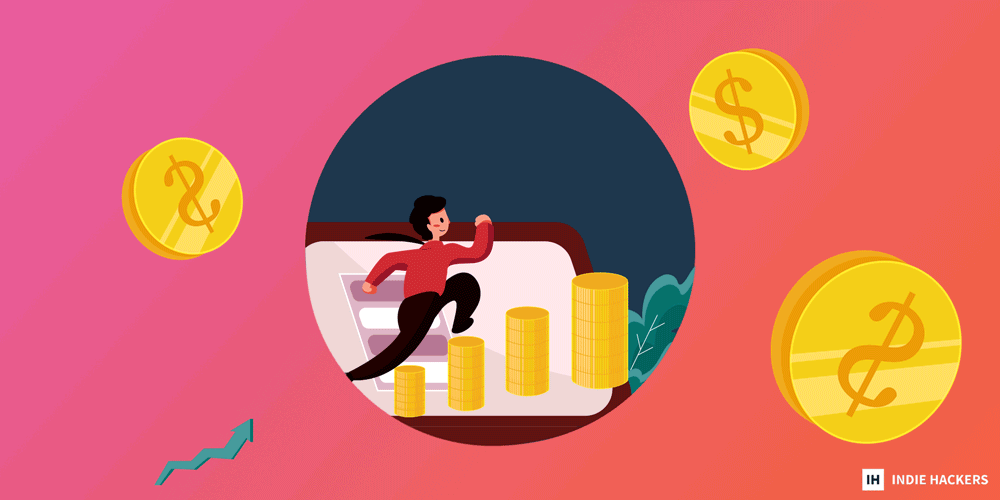
by Aytekin Tank
Staying happy and healthy:
A mistake is not the end of the world.
Errors, public mistakes, and disappointments can feel devastating. Do everything you can to address the problem, then let it go! Learn from the situation, prepare for next time, and create contingency plans to minimize your worries.
Discuss this story.
📈 Tuan Cao Increased Traffic by 30X in Three Days

by Tuan Cao
Hi founders! I'm Tuan Cao, founder of SendToPod, a tool that allows you to turn longform articles into podcasts. Last Wednesday, I wanted to experiment with Reddit one more time. I had previously tried to post on Reddit a few times, but all of my posts were met with crickets.
To my surprise, this latest attempt was a great success!
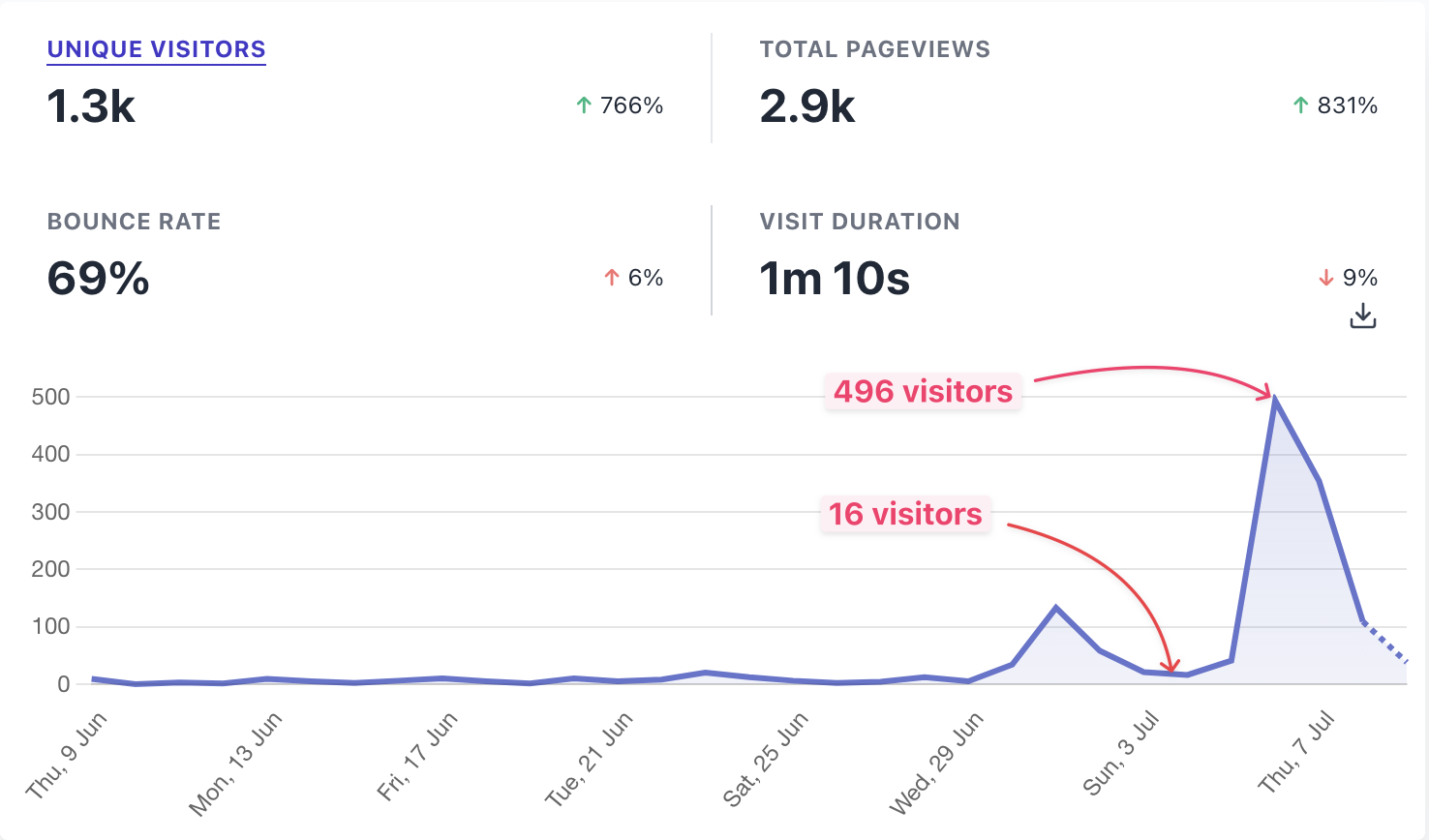
The results
I got 30x more unique visitors compared to a typical day. Plus, the average visit duration wasn't bad: Over one minute and 10 seconds. That's long enough for people to see the essential parts of the landing page.
The best thing about this was that 76 people signed up, which resulted in a conversion rate of a sweet 8.6%:
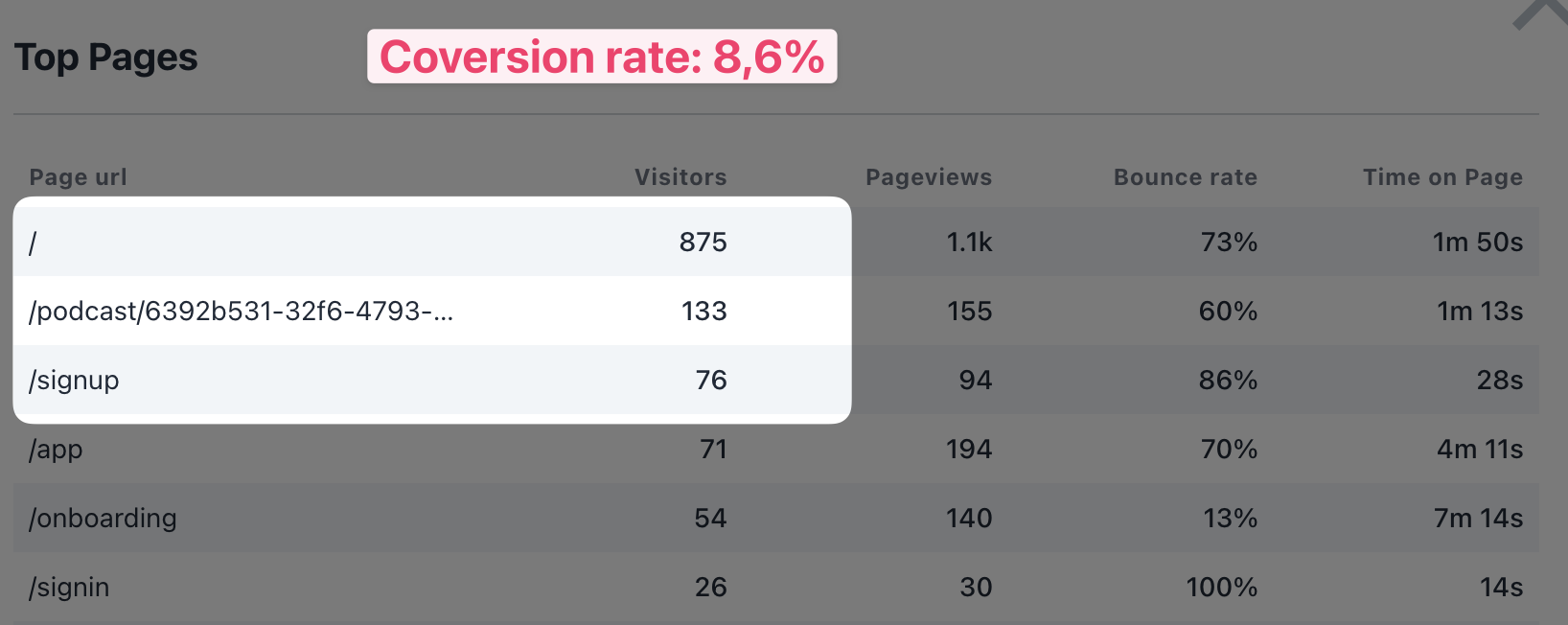
It also resulted in 70 new accounts being created:
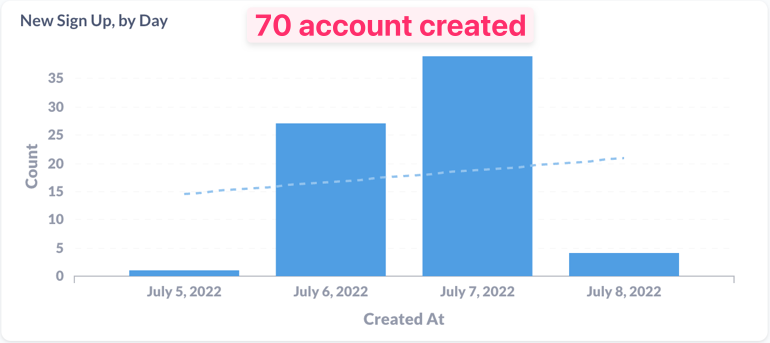
How I posted on Reddit
The first step that I took was to do some keyword research. Reddit is huge, and deciding where to post your stuff is quite a challenge in itself, because:
- There are so many subreddits, and each one has different requirements for self-promotion.
- Each subreddit has a different affinity towards various kinds of content.
My product is pretty niche, and my assumption was that its best customers are people who are interested in consuming longform content. Even this assumption seems to be incorrect, but I'll share more on this in another post!
Being pragmatic, I searched for various keywords, including:
- "Listen later."
- "PodQueue." This is a similar app to mine, and I wanted to see where similar content was being posted.
.jpeg)
I read through the rules of each relevant subreddit so that I would be able to adhere to them, while also trying to tell a story about how my product was created. Here is the actual post:
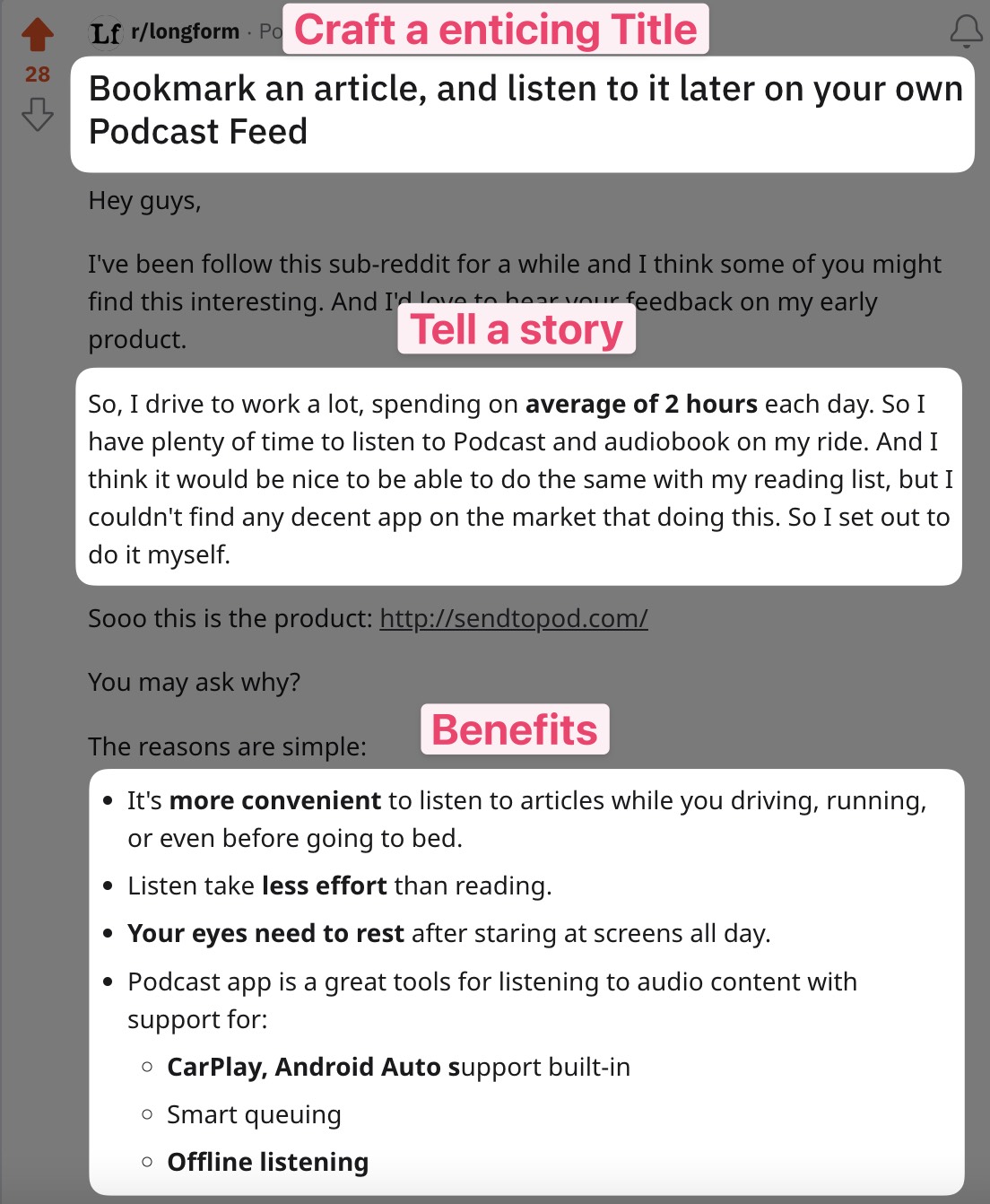
Focus on what works
After a few hours, posts on r/longform, r/longread, and r/productivityapp did not gain many upvotes, but my post on r/internetisbeautiful got quite a lot of views and positive comments. So, I stayed active on that post, and responded to all of the comments.
The post ended up getting 40K+ views after a few hours, and eventually got to 90K+ views:
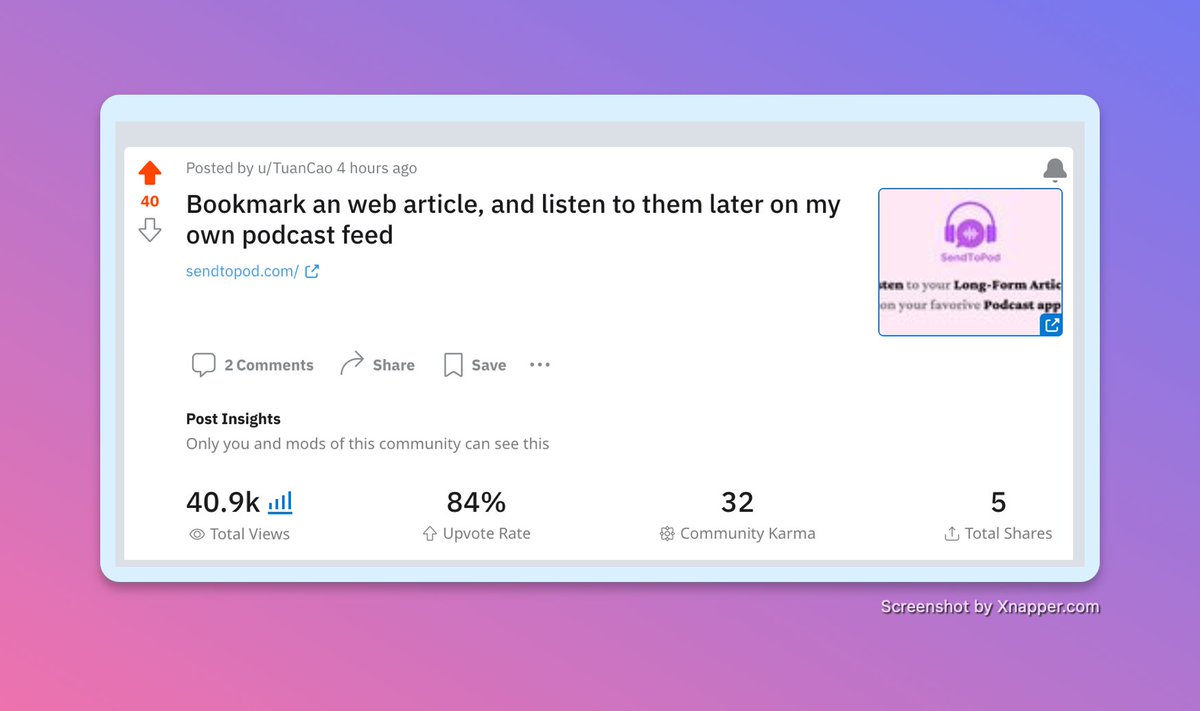
Lessons learned
Here are the lessons that I learned from this experience:
- Building a SaaS product is hard, especially the mental aspect of it. I'm always uncertain about whether I should abandon it or keep going.
- Experiment with posting on different marketing channels with different wording, perspectives, and presentations.
Discuss this story.
🐦 The Tweetmaster's Pick

by Tweetmaster Flex
I post the tweets indie hackers share the most. Here's today's pick:

🏁 Enjoy This Newsletter?
Forward it to a friend, and let them know they can subscribe here.
Also, you can submit a section for us to include in a future newsletter.
Special thanks to Jay Avery for editing this issue, to Gabriella Federico for the illustrations, and to Kolaente, Priyanka Vazirani, Romain Simon, Aytekin Tank, and Tuan Cao for contributing posts. —Channing









.jpeg)



